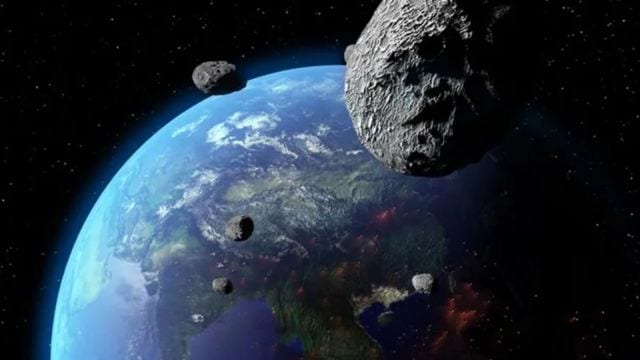Earth is ever-changing, shaped by tectonic forces and volcanic activity. Yet some of its most fascinating features no longer form today—like the mysterious massif-type anorthosites. These colossal rock formations, rich in titanium ore, have baffled scientists for years. But now, groundbreaking research from Rice University reveals how these ancient giants formed and what they tell us about Earth’s deep past and fiery evolution.
What Are Massif-Type Anorthosites?
Massif-type anorthosites are colossal rock formations primarily composed of plagioclase, a feldspar mineral rich in calcium and sodium. These rocks stand out not only for their sheer size but for their rarity, forming exclusively during Earth’s middle history, between 1 and 2 billion years ago. Today, such formations no longer occur on Earth. Massif-type anorthosites can cover areas as vast as 42,000 square kilometers—nearly the size of Switzerland—and are often associated with rich deposits of titanium, a highly valuable industrial metal used in everything from aerospace engineering to medical devices .
For decades, geologists have been intrigued by these massive formations, debating their origins and the processes that led to their creation. One of the central questions has been whether these rocks were formed by the melting of Earth’s mantle, which lies beneath the crust, or if they originated from processes involving the crust itself. Compounding the mystery, some theories suggested that tectonic forces may have played a role, while others argued that these formations were the result of more localized, isolated events .
The Recent Breakthrough
recent research led by geochemists Duncan Keller and Cin-Ty Lee from Rice University, published in Science Advances on August 14, 2024, has provided critical insights into how these massive formations came to be.
The Rice University team focused on the Marcy and Morin anorthosites—two classic examples of these formations found in North America’s Grenville orogen. These anorthosites, formed around 1.1 billion years ago, have long been a source of geological intrigue. To uncover their origins, the researchers employed advanced isotopic analysis techniques, measuring the isotopes of boron, oxygen, neodymium, and strontium within the rocks. This method allowed them to trace the source of the magmas that formed the anorthosites .
The results were groundbreaking. Keller and his team found that the magmas responsible for forming these massive anorthosites were derived from oceanic crust that had been altered by seawater at low temperatures. This oceanic crust was then subducted—forced underneath a continental plate—causing it to melt due to the intense heat and pressure. The melting of the subducted crust generated the calcium- and sodium-rich magma that eventually crystallized into the colossal anorthosites we observe today .
Subduction and Earth’s Thermal History
The mantle was much hotter billions of years ago, and this elevated temperature allowed for more intense subduction processes than those we see today. The hotter mantle enabled the extensive melting of subducted oceanic crust, which in turn gave rise to the large magma bodies that formed massif-type anorthosites.
By linking these rocks to ancient subduction processes, the study not only explains their formation but also provides insight into how Earth’s tectonic activity has evolved over time. This research sheds light on when plate tectonics may have begun and how subduction dynamics operated billions of years ago.
The significance of this study goes beyond simply solving the mystery of massif-type anorthosites. It provides a new way of exploring Earth’s geological past, particularly the processes that shaped the planet’s crust and mantle during its middle history. Understanding how and when these massive rock formations were created offers clues to the broader tectonic and thermal evolution of the Earth.
Additionally, this research has practical implications for the study of valuable mineral deposits. Massif-type anorthosites are known to host rich titanium ore deposits, which are crucial for industries such as aerospace, electronics, and renewable energy. By understanding how these rocks formed, geologists can better predict where similar deposits might be found, guiding future exploration efforts.
What We Can Learn from Anorthosites
The study of massif-type anorthosites offers a unique window into the Earth’s ancient past, revealing the processes that shaped the planet’s crust and mantle billions of years ago. These rocks, which no longer form today, serve as time capsules that chronicle the Earth’s tectonic and thermal evolution. By studying them, geologists can better understand how the planet’s internal dynamics have changed over time, from a hotter, more volatile world to the relatively stable planet we inhabit today.
This research also underscores the importance of interdisciplinary approaches in geology. By combining classical petrology with cutting-edge isotopic analysis, the researchers were able to make connections that had previously eluded scientists.
Looking Ahead: The Future of Anorthosite Research
While the study of massif-type anorthosites has provided new insights into Earth’s past, there is still much to learn. Future research will likely focus on other examples of these rocks from different parts of the world, using similar techniques to further refine our understanding of how they formed. Additionally, the novel application of boron isotopic analysis in this study may inspire geologists to apply this method to other types of ancient rocks, potentially unlocking even more secrets from Earth’s distant past.
As we continue to explore the mysteries of Earth’s geology, the study of massif-type anorthosites stands as a testament to the power of scientific inquiry. These massive rock formations, once a geological enigma, now offer valuable insights into the forces that have shaped our planet for billions of years.
Reference:
Keller, D. S., Lee, C.-T. A., Peck, W. H., Monteleone, B. D., Martin, C., Vervoort, J. D., & Bolge, L. (2024). Mafic slab melt contributions to Proterozoic massif-type anorthosites. Science Advances, 10(33).



















